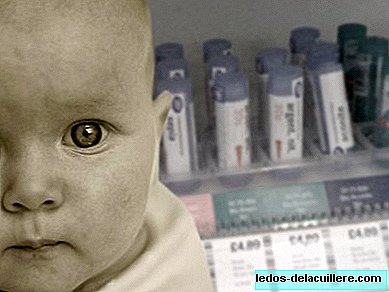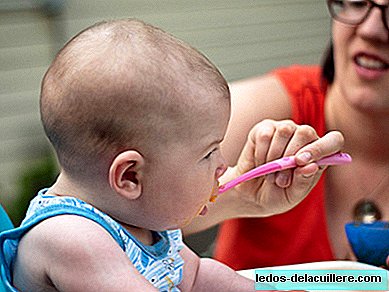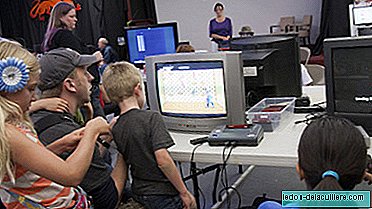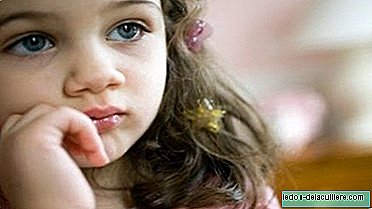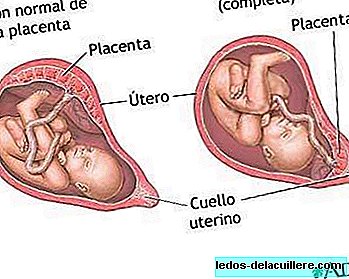
The placenta is a fundamental organ in pregnancy, since it constitutes the vital connection of the baby with the mother. Its name comes from Latin and means "flat cake", referring to its appearance in humans. Below you can see what the real appearance of the placenta is in some photographs.
The placenta begins to form at the same time of implantation of the embryo in the uterine wall, an event that occurs approximately a week after fertilization. The placenta develops from the same cells from the sperm and egg that developed the fetus.
What is the placenta for?
Its main mission is that of transmit nutrients to the baby. The level of blood flow to the uterus is about 500-700 ml per minute. Thanks to that blood, it supplies the baby with oxygen (it works as a "fetal lung"), nutrients and hormones. It also takes care of the baby's wastes, especially the carbon dioxide that passes into the maternal bloodstream to eliminate it. The mother removes these wastes through the kidneys.
So the placenta acts as a filter responsible for keeping these harmful substances away from your baby's organic system.
Another of the missions is the endocrine function, that is, hormone manufacturing, among them the human chorionic gonadotropin, which is what allows the pregnancy to continue ahead. This hormone is the one measured in pregnancy tests.
It also synthesizes estrogens or female sex hormones, which play a very important role in embryo implantation, breast development and placental lactogen, which controls maternal metabolism and stimulates the growth of the baby.
All these hormones help to ensure that the woman's body goes through the appropriate changes during pregnancy.
While many microorganisms such as bacteria, germs or toxic are not able to cross the placenta, so the fetus is protected during a time when its immune system is not mature, most viruses are capable of crossing or breaking This barrier.
What is it made of?
The placenta is formed by a maternal component (which is a transformation of the uterine membrane or mucosa) and another part of fetal origin (trophoblast) The fetal side of the placenta is made up of hundreds of cross-linked blood vessels. In the evolution of the trophoblast, the chorionic plate is generated with the different placental components.
The maternal portion is the outermost part of the placenta, in contact with the uterine wall, which is why it is called the basal plate. It consists of embryonic tissue as well as maternal tissue (the basal decidua with the vessels and uterine glands).

Where is the placenta located?
Once implanted and well secured in the uterine wall, the placenta does not move. It can move and change location within the uterus, since this is like a balloon that swells throughout the nine months of gestation.
Normally the placenta is on the front or back of the uterus, without interfering or plugging the cervix that is where the baby is to be born through the birth canal. It is called placenta previa when the placenta is inserted into the lower part of the uterus.
The placenta previa can be occlusive, if it completely clogs the cervix or non-occlusive, if the tamponade is not total.
How long does the placenta live?
Like every organ, the placenta has a biological process: born, grows and dies. And how long does the placenta live? As much as pregnancy: approximately 40 weeks. It grows throughout the pregnancy, although in the last weeks of it it stagnates.
From the 41st week there is a greater risk that it will not work properly and stop transmitting the nutrients that the baby needs to grow, it is what is called “aged or old placenta”.
When the gestation ends, the placenta usually measures 1.5-3 centimeters thick and 15-20 centimeters in diameter and weighs about 450-550 grams, regardless of the umbilical cord to which it is attached.
The birth does not end until the mother does not expel the placenta, that is, until the last phase of the birth, called “birth,” in which there are still contractions.
Once it is expelled, it should be checked that it is complete, since if there are remains left inside the uterus, complications may occur. And also controls the state of the placenta which can give clues about the state of the baby.
The placenta, more than an organ
Despite its rather impressive appearance (they say that some parents who witness childbirth only get dizzy when the placenta is expelled), the cult by this organ in different traditions and in different cultures attests to its importance.
Definitely, the placenta is an organ of vital importance for the growth and protection of the fetus in the womb, but its meaning of "life" and its symbology transcends the merely physiological.


